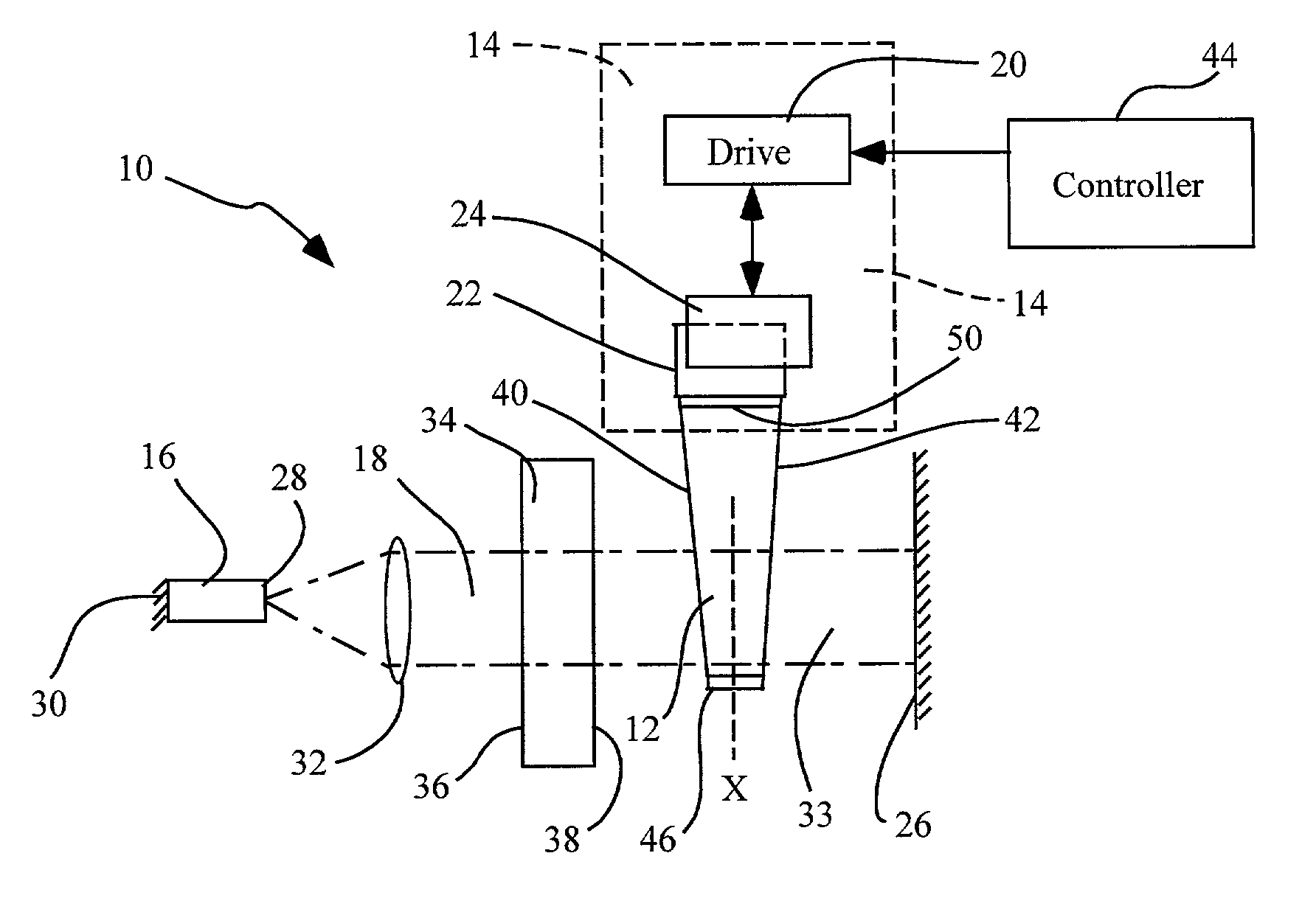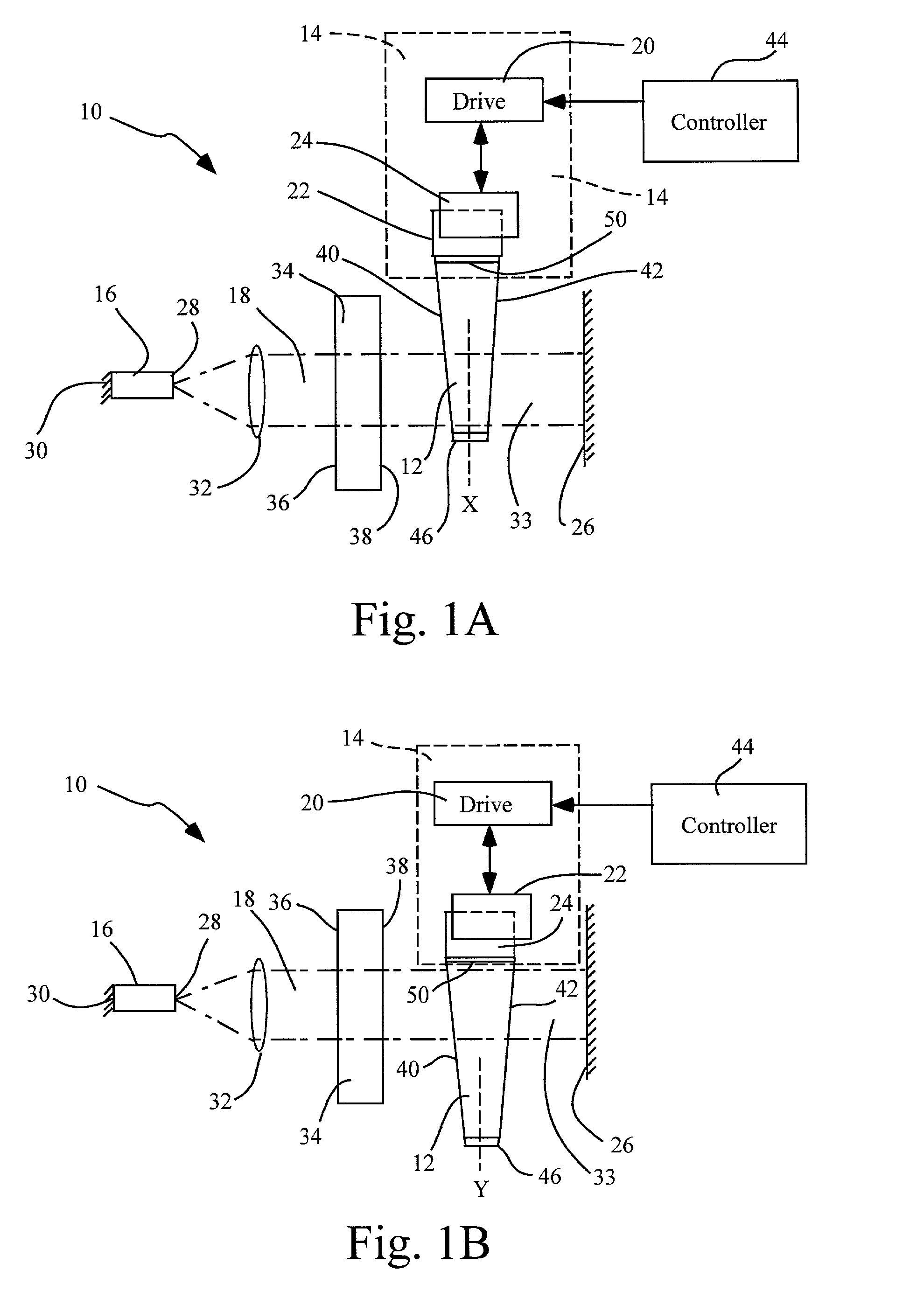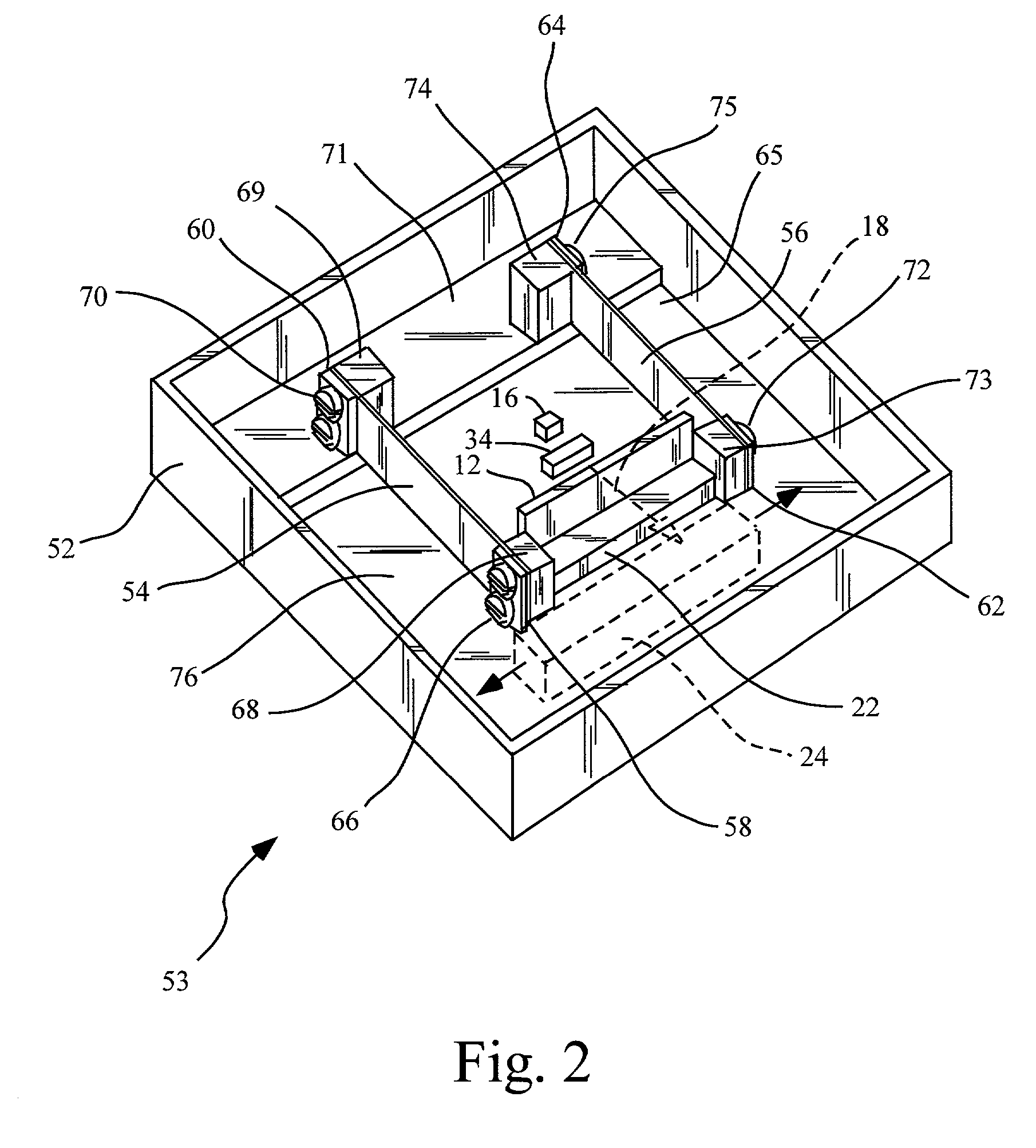[0010]The use of a hermetically sealable container in accordance with the invention permits enclosing an
external cavity laser within a
contamination-free or low
contamination environment, in an
inert atmosphere, which protects the anti-reflective (AR)
coating on the
gain medium, as well as optical surfaces on the end reflector, tuning element and other optical components. The deposition of contaminants onto optical associated with an
external cavity laser, which may occur in the absence of hermetic sealing, can result in aberrations which hinder the performance of the external laser cavity and promote degradation of critical optical surfaces.
[0011]The invention provides for magnetically
coupling a drive element or
assembly that is external to a hermetically sealed container, to a tunable element within the hermetically sealed container, such that the tuning element can be magnetically actuated by the drive assembly while potential contaminants associated with the drive assembly are external to the hermetically sealed container. Many of the components associated with drive assemblies, such as lubricants, adhesives, cable insulators and plasticized parts, can have high
outgassing characteristics during laser operation such that volatile hydrocarbons are emitted from the drive assembly. The magnetic coupling of a tuning element within a hermetically sealed enclosure, by a drive assembly located outside of the enclosure, eliminates the risk of laser
optical surface contamination by drive assembly components.
[0012]In certain embodiments, one or more
activated carbon drains may be included within the hermetically sealed enclosure and positioned to collect volatile hydrocarbons produced by
outgassing from components of the
external cavity laser. The
activated carbon drain has a large surface area of
activated carbon that allows for adsorbing or
trapping the
outgassing volatile organic compounds that occur during the operation of the laser. Organic
hydrocarbon materials released from epoxies and lubricants used during the assembly of the
external cavity laser or utilized in sealing the hermetically sealable enclosure are also trapped by the activated carbon drain. The activated carbon drain allows the optical surfaces of the tunable
external cavity laser to remain free of organic contaminants in the hermetically sealed enclosure that would otherwise hinder performance.
[0013]In other embodiments, one or more
moisture traps may be included within the hermetically sealable container and positioned to collect
water vapor that may outgas from
polyimide or other
moisture holding insulator or material present in the external cavity laser. Such outgassed
water vapor, if not trapped, may condense on critical optical surfaces and reduce performance of the external cavity laser, and may promote
corrosion of components.
Moisture condensation is particularly a concern after “cooldown” periods when the laser has not been in use. The material of the
moisture trap may comprise a variety of desiccants. The moisture trap prevents condensation of water on optical surfaces and elsewhere that would otherwise reduce performance in the operation of the external cavity laser and promote
corrosion of laser components within the hermetically sealed enclosure.
[0016]In certain embodiments, selective heating of important optical surfaces may be employed to prevent condensation of contaminants thereon. Such heating may be employed during cool-down periods when the
gain medium is not powered, to prevent condensation when the external cavity laser is not in use. One or more heat sources, either positioned internally or externally to the hermetically sealed enclosure, may be used to heat the
gain medium of the external cavity laser when the gain medium is not powered, in order to maintain a relatively high temperature for the anti-reflective
coating on the output
facet of the gain medium to prevent condensation thereon when the laser is not in use. Heating in this manner may also be used in connection with the end mirror, tunable elements or other components with sensitive optical surfaces to maintain a temperature higher than the activated carbon drain, moisture trap and / or the sacrificial surface present in the hermetically sealed container, to further prevent the contamination of these optical surfaces.
 Login to View More
Login to View More  Login to View More
Login to View More 


